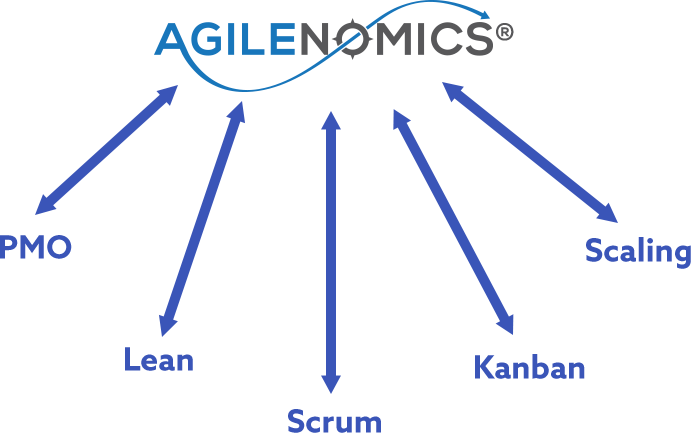Welcome to
Bottom-Line Agility
- Value-Side Thinking
- Waste Prevention
- LEAN-AGILE Economic Fundamentals
- Economic Mindset Adoption
Ours is an “Applied Agile” approach, relying on core fundamentals to foster a value-side mindset.

Lean-Agile’s economic roots and principles are “methodology agnostic”.
John has been passionate about creating and leveraging quantifiable business cases for continuous improvement throughout his 25+ year career.
In his professional practice, he has always focused on solving for the gaps and details that standard certification methodologies do not explicitly cover in customized situations.
John has provided guidance and services to multiple clients across the Tech, Telecom, Media, Financial, and Energy industries.
He has a bachelor’s degree in Physics from the University of Pennsylvania, as well as a MBA from Marymount University.
It is not uncommon to find IT organizations that do not experience as much success as they originally anticipated from their initial Agile Transformation attempts. In many cases the phrase widely attributed to Peter Drucker “Culture eats Strategy for Breakfast” is definitely a root cause for a lot of these situations, as Agile Transformations are certainly not about mechanics alone. However, there are several other legacy patterns, behaviors, misconceptions, and even educational gaps that are still common in the IT industry in a broader sense, and are inhibiting organizations from maximizing the potential of their Agile Transformations.
All of these conditions introduce economic inefficiencies that are rarely studied in detail, and as a result, they continue to persist and incubate, simply because “everyone else is doing the same thing”. These inefficiencies have been around for a long time, and in fact, most of them pre-date the Agile process, but they are clearly being exposed via the Agile process now. The costs associated with of some of the inefficiencies that we typically uncover in our consulting practice are quite staggering, as we highlight in our training case studies. The fact that we frequently encounter the same inefficiencies across many organizations supports the theory that there is a fundamental gap of understanding on how to identify and how to deal with these particular issues. Some examples of common, repeatable problems we have seen include:
The Agilenomics™ brand of training focuses on exposing the “elephant of inefficiency in the room” using simple techniques designed to expose each inefficiency for what it is, and provide those being trained with options to prevent repeating the same strategic and tactical mistakes that we keep encountering in the industry.

